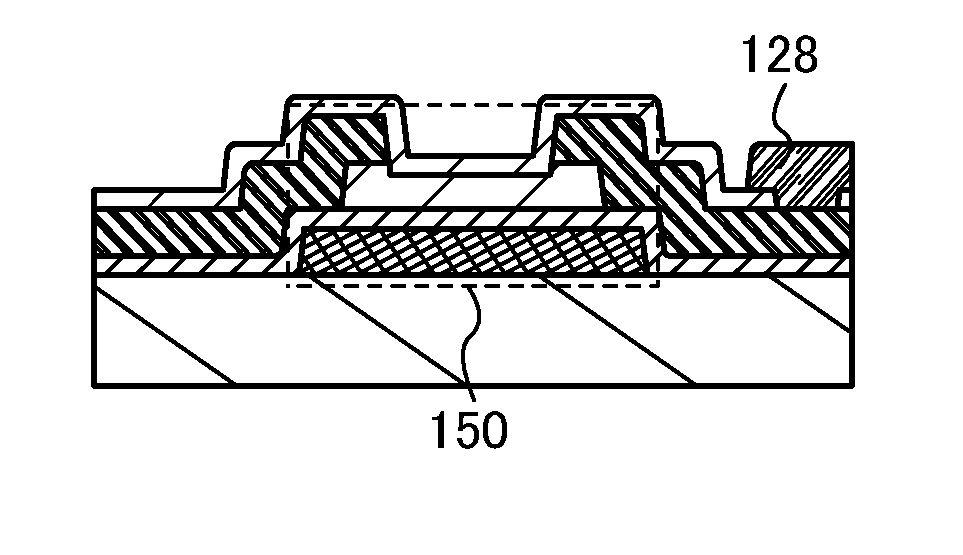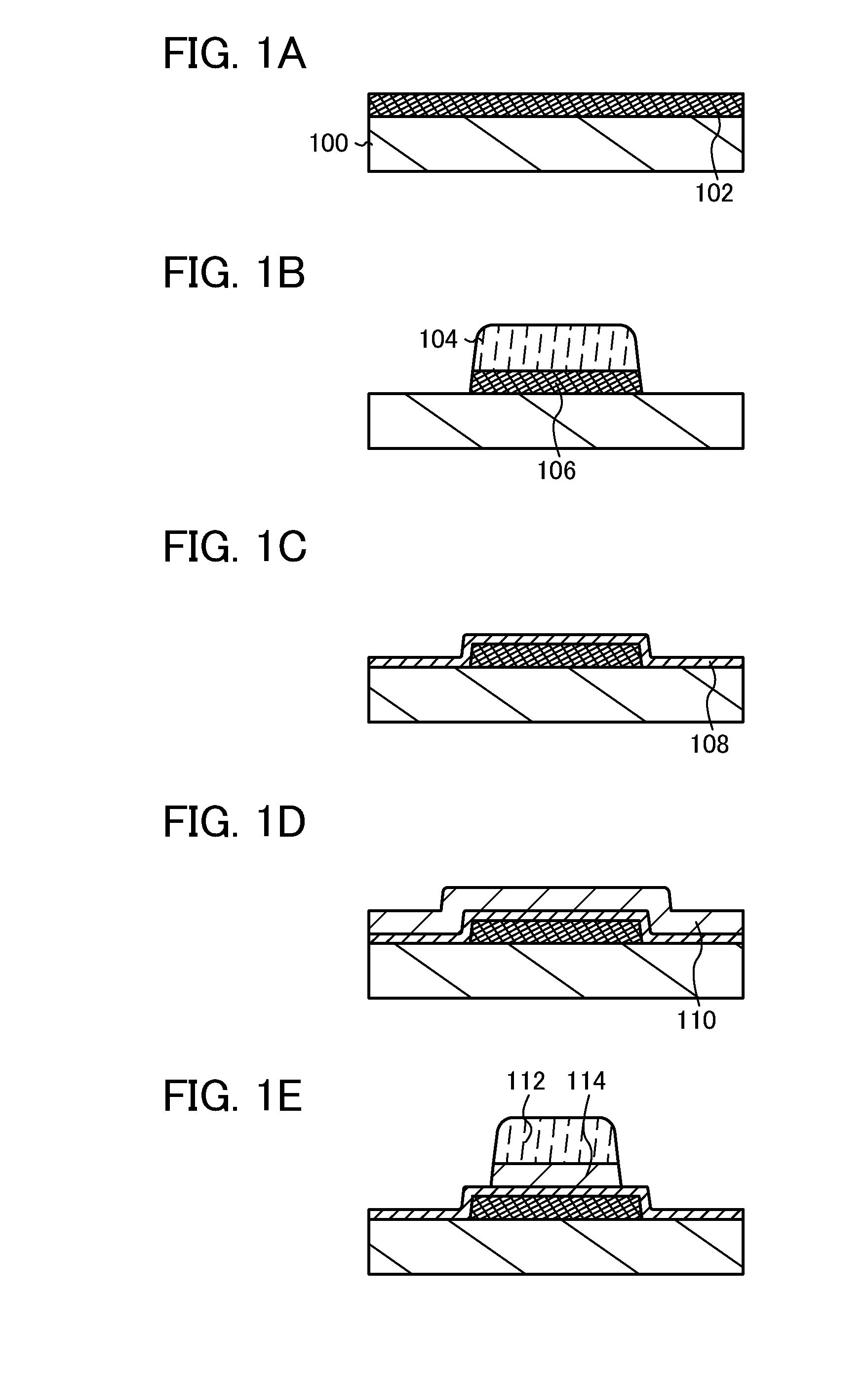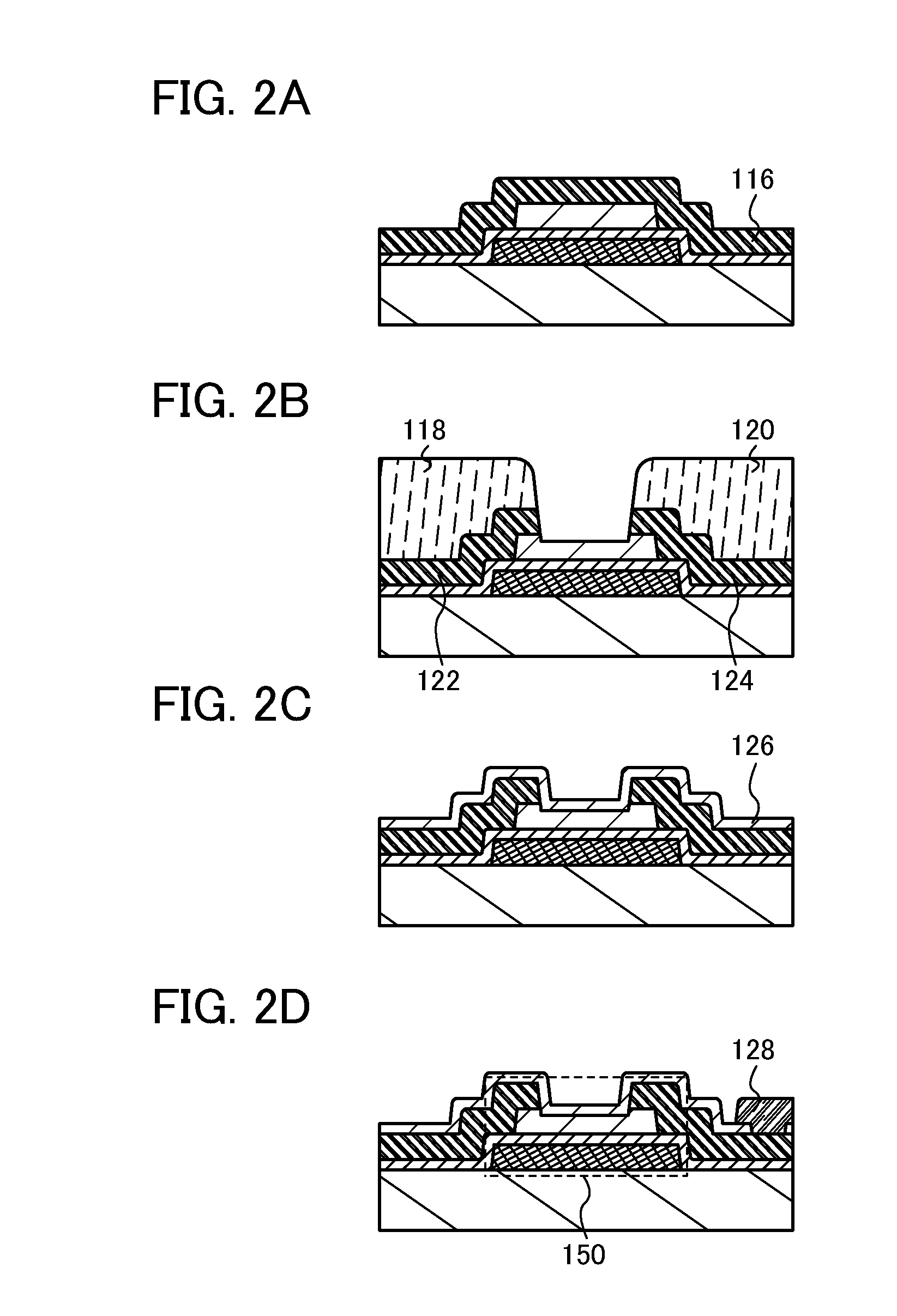Method for manufacturing semiconductor device
a manufacturing method and semiconductor technology, applied in the direction of iron compounds, cobalt compounds, nickel compounds, etc., can solve the problems of not finding the manufacturing condition by which a semiconductor element using an oxide semiconductor can have favorable characteristics, and the characteristics of the oxide semiconductor itself have not been elucidated. to achieve the effect of favorable characteristics
- Summary
- Abstract
- Description
- Claims
- Application Information
AI Technical Summary
Benefits of technology
Problems solved by technology
Method used
Image
Examples
embodiment 1
[0046]In this embodiment, an example of a method for manufacturing a semiconductor element which is used for a semiconductor device is described with reference to drawings.
[0047]First, a conductive layer 102 is formed over a substrate 100 (see FIG. 1A).
[0048]Any substrate can be used for the substrate 100 as long as it is a substrate having an insulating surface, for example, a glass substrate. It is preferable that the glass substrate be a non-alkali glass substrate. As a material of the non-alkali glass substrate, a glass material such as aluminosilicate glass, aluminoborosilicate glass, barium borosilicate glass, or the like is used, for example. Besides, as the substrate 100, an insulating substrate formed of an insulator such as a ceramic substrate, a quartz substrate, or a sapphire substrate, a semiconductor substrate formed of a semiconductor material such as silicon, over which an insulating material is covered, a conductive substrate formed of a conductive material such as ...
embodiment 2
[0085]In this embodiment, an example, which is different from the above embodiment, of a method for manufacturing a semiconductor element used for a semiconductor device is described with reference to drawings. Note that many parts of a method for manufacturing a semiconductor device in this embodiment are the same as those in Embodiment 1. Therefore, in the following description, repeated description of the same portions is omitted, and different points are described in detail.
[0086]First, a conductive layer 202 is formed over a substrate 200 (see FIG. 3A). The previous embodiment (the description with reference to FIG. 1A or the like) can be referred to for the details of the substrate 200, the conductive layer 202, or the like. A base layer may be formed over the substrate 200. The previous embodiment can also be referred to for the detail of the base layer.
[0087]Next, a resist mask 204 is selectively formed over the conductive layer 202 and the conductive layer 202 is selectivel...
embodiment 3
[0108]In this embodiment, a manufacturing process of an active matrix substrate which is an example of a semiconductor device is described with reference to drawings. Note that many parts of the manufacturing process described in this embodiment are the same as those in the previous embodiments. Therefore, in the following description, repeated description of the same portions is omitted, and different points are described in detail. Note that in the following description, FIGS. 5A to 5C and FIGS. 6A to 6C are cross-sectional views and FIG. 7 is a plan view. In addition, line A1-A2 and line B1-B2 in each of FIGS. 5A to 5C and FIGS. 6A to 6C correspond to line A1-A2 and line B1-B2 in FIG. 7, respectively. Note also that in this embodiment, a semiconductor element illustrated in a structure taken along line A1-A2 is similar to the semiconductor element described in the previous embodiment (Embodiment 2).
[0109]First, a wiring and an electrode (a gate electrode 302, a capacitor wiring 3...
PUM
 Login to View More
Login to View More Abstract
Description
Claims
Application Information
 Login to View More
Login to View More - R&D
- Intellectual Property
- Life Sciences
- Materials
- Tech Scout
- Unparalleled Data Quality
- Higher Quality Content
- 60% Fewer Hallucinations
Browse by: Latest US Patents, China's latest patents, Technical Efficacy Thesaurus, Application Domain, Technology Topic, Popular Technical Reports.
© 2025 PatSnap. All rights reserved.Legal|Privacy policy|Modern Slavery Act Transparency Statement|Sitemap|About US| Contact US: help@patsnap.com



